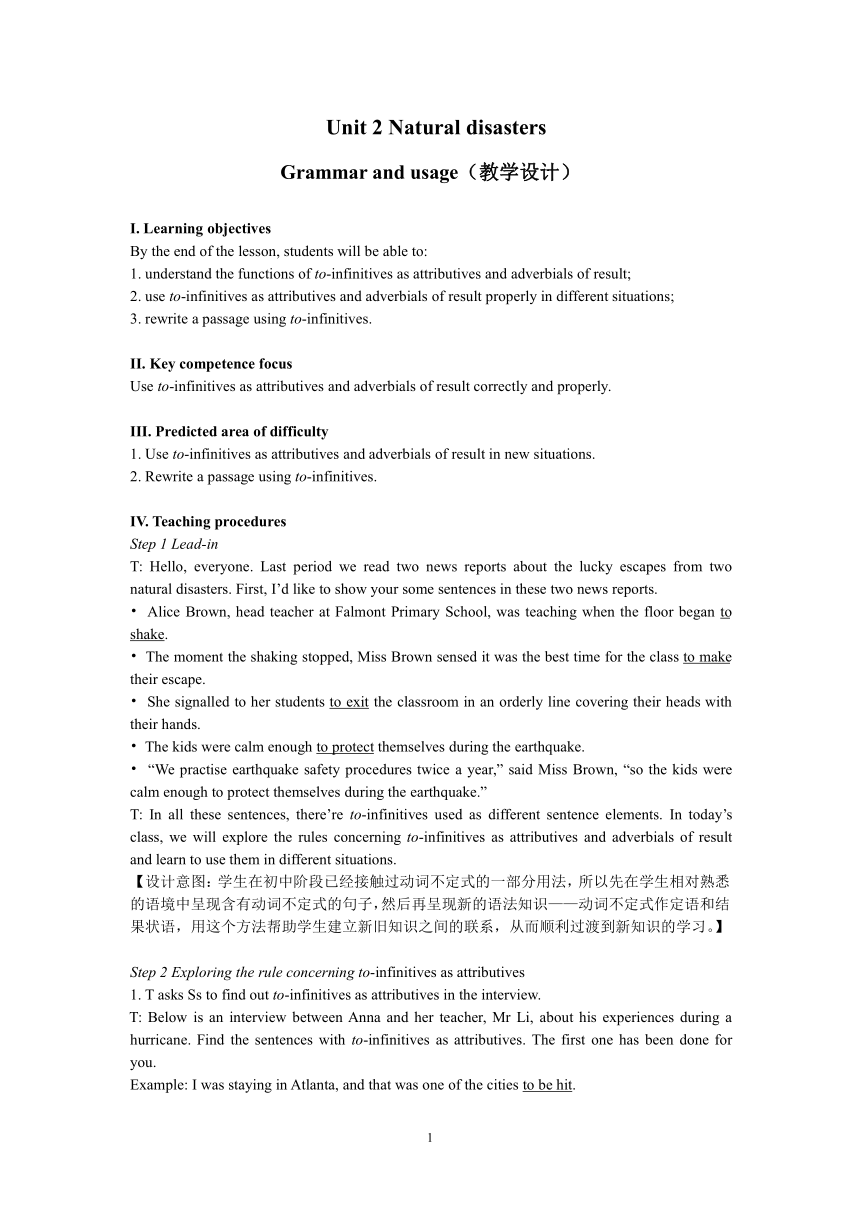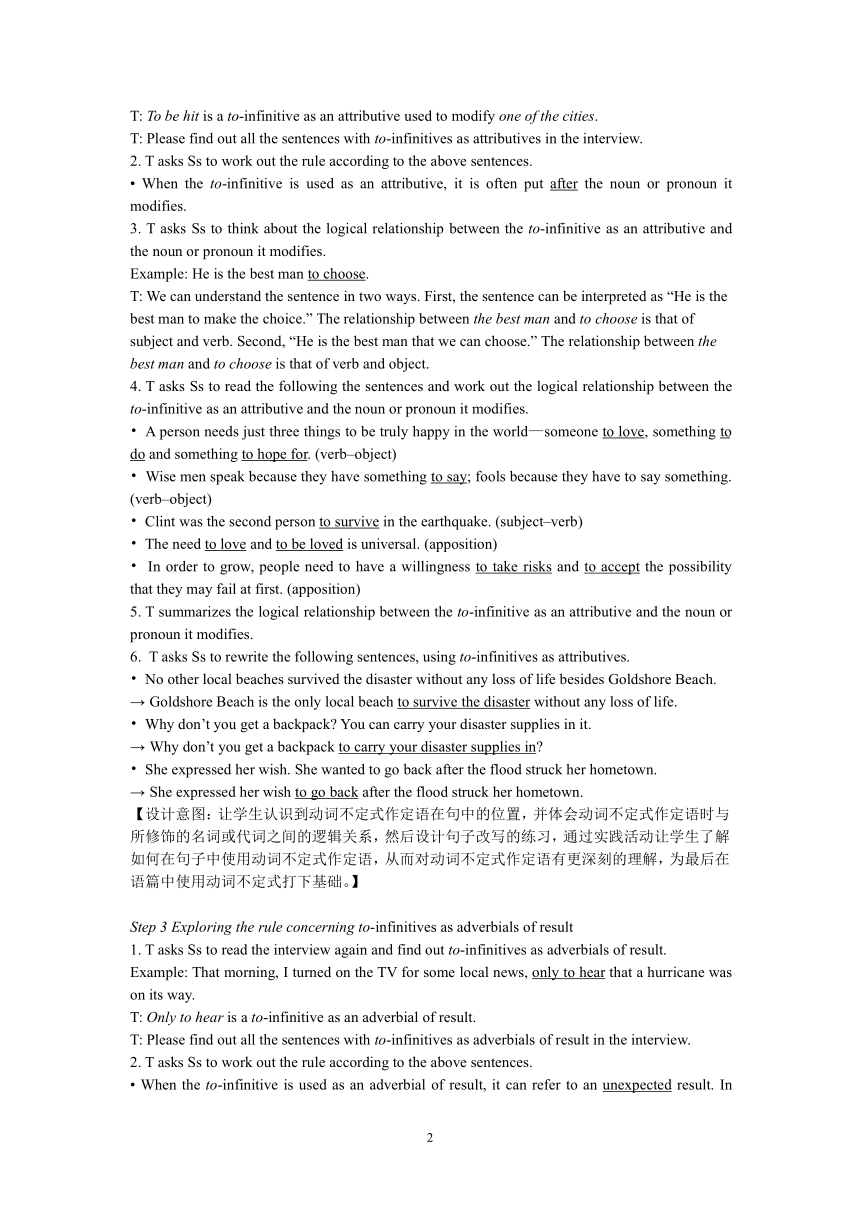

Unit 2 Natural disasters Grammar and usage(教学设计) I. Learning objectives By the end of the lesson, students will be able to: 1. understand the functions of to-infinitives as attributives and adverbials of result; 2. use to-infinitives as attributives and adverbials of result properly in different situations; 3. rewrite a passage using to-infinitives. II. Key competence focus Use to-infinitives as attributives and adverbials of result correctly and properly. III. Predicted area of difficulty 1. Use to-infinitives as attributives and adverbials of result in new situations. 2. Rewrite a passage using to-infinitives. IV. Teaching procedures Step 1 Lead-in T: Hello, everyone. Last period we read two news reports about the lucky escapes from two natural disasters. First, I’d like to show your some sentences in these two news reports. Alice Brown, head teacher at Falmont Primary School, was teaching when the floor began to shake. The moment the shaking stopped, Miss Brown sensed it was the best time for the class to make their escape. She signalled to her students to exit the classroom in an orderly line covering their heads with their hands. The kids were calm enough to protect themselves during the earthquake. “We practise earthquake safety procedures twice a year,” said Miss Brown, “so the kids were calm enough to protect themselves during the earthquake.” T: In all these sentences, there’re to-infinitives used as different sentence elements. In today’s class, we will explore the rules concerning to-infinitives as attributives and adverbials of result and learn to use them in different situations. 【设计意图:学生在初中阶段已经接触过动词不定式的一部分用法,所以先在学生相对熟悉的语境中呈现含有动词不定式的句子,然后再呈现新的语法知识———动词不定式作定语和结果状语,用这个方法帮助学生建立新旧知识之间的联系,从而顺利过渡到新知识的学习。】 Step 2 Exploring the rule concerning to-infinitives as attributives 1. T asks Ss to find out to-infinitives as attributives in the interview. T: Below is an interview between Anna and her teacher, Mr Li, about his experiences during a hurricane. Find the sentences with to-infinitives as attributives. The first one has been done for you. Example: I was staying in Atlanta, and that was one of the cities to be hit. T: To be hit is a to-infinitive as an attributive used to modify one of the cities. T: Please find out all the sentences with to-infinitives as attributives in the interview. 2. T asks Ss to work out the rule according to the above sentences. When the to-infinitive is used as an attributive, it is often put after the noun or pronoun it modifies. 3. T asks Ss to think about the logical relationship between the to-infinitive as an attributive and the noun or pronoun it modifies. Example: He is the best man to choose. T: We can understand the sentence in two ways. First, the sentence can be interpreted as “He is the best man to make the choice.” The relationship between the best man and to choose is ... ...
~~ 已预览到文档结尾了 ~~